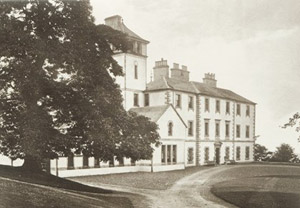WordPress database error: [Got error 28 from storage engine]
SELECT t.*, tt.*, tr.object_id FROM wp_terms AS t INNER JOIN wp_term_taxonomy AS tt ON tt.term_id = t.term_id INNER JOIN wp_term_relationships AS tr ON tr.term_taxonomy_id = tt.term_taxonomy_id WHERE tt.taxonomy IN ('category', 'post_tag', 'post_format') AND tr.object_id IN (5369, 5694, 60496) ORDER BY t.name ASC
Clan Cunningham History

Finlaystone House was the seat of the Cunninghams between 1399 and 1796. It’s now in the hands of the chief of Clan MacMillan
The first Cunningham is believed to have been a Flemish man named Wernibald, who took on the placename as his own when he received a grant of Kilmaurs in Cunningham, Ayrshire from Hugo de Morville, the Constable of Scotland, in 1140.
Haakon IV, King of Norway, arrived off the coast of this area to re-assert his rule over Scotland’s Isles in 1263. This led to the sea battle of Largs from which Haakon would never return home. For his part in the battle, Harvey Cunningham of Kilmaurs had his family’s property expanded by Alexander II.
In 1321, Robert the Bruce granted the lands of Lamburgton to Hugh Cunningham. When Hugh’s grandson Sir William married Margaret, heiress of the Dennistons of that Ilk, Glencairn became the property of the Cunninghams also. James III made Sir William’s grandson, Alexander, Earl of Glencairn in 1488. He and his King died together at the Battle of Sauchieburn later in the same year.
The 5th Earl of Glencairn was a member of the ‘Lords of the Congregation of Jesus Christ’, whose business was misappropriating church property and undermining Scotland’s government on behalf of the well-paying English. The group’s work was instrumental in the Tudors’ destruction of Mary, Queen of Scots’ rights.
The 9th Earl, however, was a patriot in the mould of the 1st Earl.
While Scotland was under the control of Cromwell’s generals in 1653, Glencairn raised a rebellion on behalf of Charles II who was safe on the Continent. The rebellion was hopeless but in 1660 he was created Lord Chancellor of Scotland, following the Restoration.
In the 18th century, a number of Cunninghams, including the 14th Earl, were friends in art with Robert Burns.
For the chief, Burns wrote this tribute:
The bridegroom may forget the bride
Was made his wedded wife yestreen;
The monarch may forget the crown
That on his head an hour has been;
The mother may forget the child
That smiles sae sweetly on her knee;
But I’ll remember thee, Glencairn,
And a’ that thou hast done for me!
Clan Cunningham Posts








